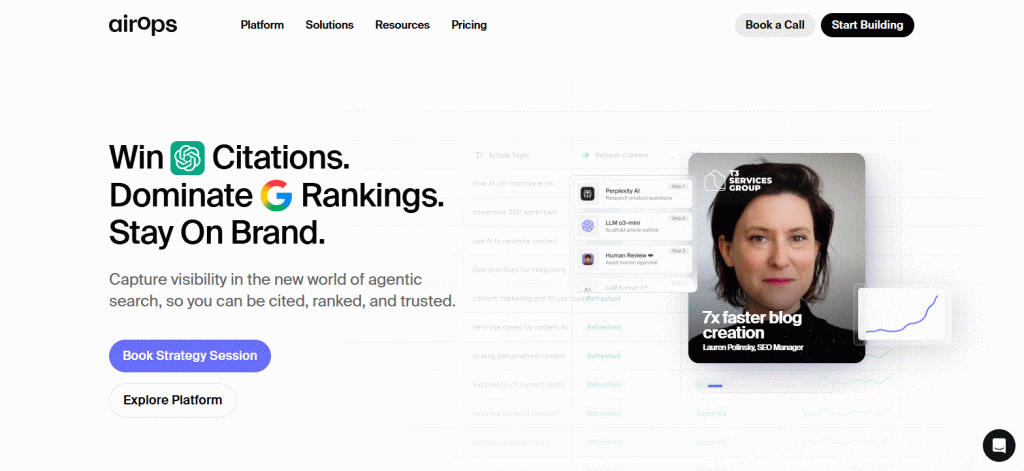Promoting tools and software on your website can be a lucrative way to generate income, especially if you leverage affiliate marketing effectively. By creating well-structured articles and integrating affiliate links, you can monetize your website traffic and earn commissions on referred sales.
In this guide, I’ll share my approach to making money by promoting various tools and software on my website, including how to select the right products, optimize your content, and use strategic keywords to attract your target audience. Whether you’re just starting out or looking to enhance your affiliate marketing efforts, these tips will help you maximize your earnings.
Table of Contents
Toggle1. Choosing the Right Tools to Promote
The first step to successful affiliate marketing is selecting the right tools or software to promote. This involves researching products that are not only popular but also relevant to your audience. You can start by looking for trending tools on Google or exploring reputable sites like Capterra, where you can find software categorized by industry and function. For instance, you might find categories like CRM (Customer Relationship Management), email marketing, project management, and more. Choosing tools that align with your website’s niche ensures that your content remains valuable and relevant to your readers.
2. Researching Affiliate Programs
Once you’ve identified a tool you’d like to promote, the next step is to check if it has an affiliate program. Most software companies have affiliate programs that you can join to earn commissions on sales. To find these programs, visit the software’s official website and scroll down to the footer where you typically find links to their affiliate program. Joining these programs usually involves filling out a simple application where you provide details about your website or social media presence. Having a website can increase your chances of being accepted into these programs.
3. Creating High-Quality Content
Content is king when it comes to affiliate marketing. The quality of your content will determine how well your audience responds to your recommendations. Here are some content types that can help you effectively promote tools on your website:
a. Product Reviews
Writing in-depth product reviews is one of the most effective ways to promote tools. Start with a brief introduction to the tool, followed by a detailed description of its features, pricing, and benefits. Include screenshots or images of the tool to make your review more engaging. Be honest in your reviews and provide both pros and cons to build trust with your audience.
b. Comparative Articles
Another great content type is comparative articles where you compare different tools within the same category. For example, you could write an article comparing the “Top 5 CRM Tools for Small Businesses” and provide a breakdown of each tool’s features, pricing, and user experience. These articles help your readers make informed decisions while giving you the opportunity to promote multiple affiliate products.
c. How-To Guides and Tutorials
How-to guides and tutorials are valuable resources for your readers and can help drive traffic to your website. Create step-by-step guides on how to use the tools you are promoting, and include practical tips and use cases. Tutorials not only showcase the functionality of the tool but also demonstrate your expertise, making your recommendations more credible.
4. Optimizing Your Content for SEO
Search Engine Optimization (SEO) is crucial for driving organic traffic to your website. By optimizing your content for relevant keywords, you can improve your website’s visibility on search engines like Google. Here are some SEO strategies to consider:
a. Keyword Research
Use tools like Google Keyword Planner to find keywords that your target audience is searching for. Focus on long-tail keywords that are specific to the tools you are promoting. For example, instead of targeting a broad keyword like “CRM tools,” you could target a more specific keyword like “best CRM tools for small businesses.”
b. On-Page SEO
Ensure that your target keywords are included in strategic places within your content, such as the title, headers, and meta descriptions. Use descriptive, keyword-rich titles and subheadings to help search engines understand the context of your content. Additionally, optimize your images by using descriptive file names and alt tags.
c. Internal and External Linking
Internal linking helps search engines understand the structure of your website and can improve your site’s overall SEO. Link to other relevant articles on your site to keep readers engaged and reduce bounce rates. External linking to high-authority websites can also help establish your content’s credibility.

5. Using AI Tools to Streamline Content Creation
Leveraging AI tools like ChatGPT can significantly streamline the content creation process. These tools can help you generate content ideas, write articles, and even create product descriptions. For example, you can use ChatGPT to quickly generate a product review by providing it with information from the tool’s website. This can save you time and allow you to focus on other aspects of your affiliate marketing strategy.
6. Adding Affiliate Links to Your Content
Once your content is ready, it’s time to add your affiliate links. Make sure to place these links strategically within your articles. For instance, include a call-to-action (CTA) near the beginning of the article and another one at the end. This increases the chances of your readers clicking on your affiliate links.
7. Promoting Your Content
After publishing your content, promote it across various channels to maximize its reach. Share your articles on social media platforms like Facebook, Twitter, LinkedIn, and Pinterest. You can also repurpose your content into videos or infographics to reach a broader audience. Additionally, consider using email marketing to share your content with your subscribers.
8. Tracking Performance and Optimizing Strategies
Tracking the performance of your affiliate marketing efforts is crucial for understanding what works and what doesn’t. Use analytics tools to monitor metrics such as traffic, click-through rates, and conversions. This data will help you identify which tools are performing well and which ones need more attention. Based on your findings, you can optimize your content and marketing strategies to improve your results.
9. Building an Engaged Audience
Building a loyal audience is key to long-term success in affiliate marketing. Engage with your readers by responding to comments and questions on your blog and social media. Consider creating a community around your website, such as a Facebook group or an email newsletter, where you can share exclusive content and updates. A engaged audience is more likely to trust your recommendations and make purchases through your affiliate links.
10. Staying Updated with Industry Trends
The digital landscape is constantly evolving, so it’s important to stay updated with the latest industry trends and changes in affiliate marketing. Follow industry blogs, attend webinars, and participate in forums to keep yourself informed. This will help you adapt your strategies and stay ahead of the competition.
Conclusion
Affiliate marketing is a powerful way to monetize your website and create a passive income stream. By choosing the right tools to promote, creating high-quality content, optimizing for SEO, and engaging with your audience, you can build a successful affiliate marketing business. Remember, the key to success lies in providing value to your audience and building trust through honest and informative content. Start implementing these strategies today, and you’ll be on your way to making money promoting tools on your website.










